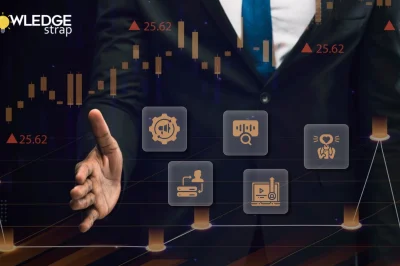Day trading continues to attract traders of all experience levels due to its fast pace, flexibility, and potential for high returns. However, in a financial landscape transformed by real-time analytics, AI-powered platforms, and algorithmic precision, only those with sound strategies are likely to succeed. This blog highlights five proven day trading strategies that remain highly effective in 2025—backed by modern tools and insights to help you gain a competitive edge.
1. Momentum Trading
Overview: Momentum trading focuses on identifying assets that are moving significantly in one direction on high volume, often due to news events, earnings announcements, or technical breakouts. The objective is to ride the wave of price movement before it loses steam.
Relevance in 2025: The integration of AI-based scanners and real-time sentiment analysis tools has made spotting momentum opportunities faster and more accurate than ever. Platforms like TradingView, Benzinga Pro, and proprietary algorithms enable traders to react in milliseconds to market catalysts.
Key Indicators:
- Relative Strength Index (RSI)
- MACD Crossovers
- VWAP (Volume Weighted Average Price)
- Volume Spikes
Best Practices:
- Trade during peak market hours for maximum liquidity
- Confirm momentum with volume and technical indicators
- Use trailing stop-loss orders to lock in profits
2. Breakout Trading
Overview: Breakout trading involves entering a trade when the price breaches a significant support or resistance level, often accompanied by a surge in volume. This strategy seeks to capture the beginning of a trend.
Relevance in 2025: With advanced predictive analytics and machine learning, breakout levels can be identified and validated with higher confidence. These tools filter out noise and highlight only the most probable breakouts.
Key Indicators:
- Horizontal Support and Resistance Levels
- Bollinger Bands
- Average True Range (ATR)
Best Practices:
- Wait for confirmation candles before entering a trade
- Monitor volume to validate the strength of the breakout
- Be cautious of false breakouts; consider waiting for a retest
3. Scalping
Overview: Scalping is a short-term trading strategy that involves making numerous trades throughout the day to exploit minor price changes. This method demands quick decision-making and impeccable execution.
Relevance in 2025: The rise of low-latency trading platforms and reduced brokerage fees has made scalping more efficient. Traders now use AI bots and microstructure analysis to identify minute price inefficiencies in real-time.
Key Indicators:
- Level II Market Data (Order Book)
- Time & Sales (Tape Reading)
- EMA (Exponential Moving Averages)
Best Practices:
- Choose highly liquid instruments to ensure quick fills
- Use Direct Market Access (DMA) for faster execution
- Maintain strict discipline in setting stop-losses and profit targets
4. Reversal Trading
Overview: Reversal trading aims to identify when a prevailing trend is losing momentum and about to change direction. This contrarian approach can yield high rewards but also comes with elevated risk.
Relevance in 2025: Thanks to enhanced chart pattern recognition and sentiment heatmaps, traders can now spot potential reversals more reliably. AI tools analyze historical behavior to alert traders to key inflection points.
Key Indicators:
- RSI and MACD Divergence
- Candlestick Reversal Patterns (e.g., Hammer, Doji)
- Pivot Points and Fibonacci Retracement Levels
Best Practices:
- Look for convergence of multiple indicators
- Trade smaller positions to manage higher volatility
- Confirm reversals with volume and price structure
5. VWAP-Based Strategy
Overview: The VWAP (Volume Weighted Average Price) is a critical metric used to evaluate the average trading price over a specific period, weighted by volume. It is often used by institutional traders to assess fair value.
Relevance in 2025: Retail traders now have access to institutional-grade platforms that incorporate VWAP strategies into their dashboards. It remains a trusted tool for intraday decision-making.
Key Indicators:
- VWAP Line on Intraday Charts
- Price Action Relative to VWAP
Best Practices:
- In uptrends, look to buy when the price pulls back to VWAP
- In downtrends, consider selling when price rallies to VWAP
- Use VWAP in conjunction with trendlines and support/resistance zones
Conclusion
The dynamics of day trading in 2025 may be shaped by technology and speed, but success still hinges on strategy, discipline, and risk management. Whether you’re leveraging momentum or playing the VWAP, each of these strategies provides a framework for informed decision-making in real-time market conditions.
Adopt the strategies that suit your trading style and personality. Combine them with robust tools and continuous education to stay ahead in an increasingly competitive trading environment.
Disclaimer: Trading involves risk and is not suitable for everyone. Always do your own research or consult with a financial advisor before making trading decisions.






